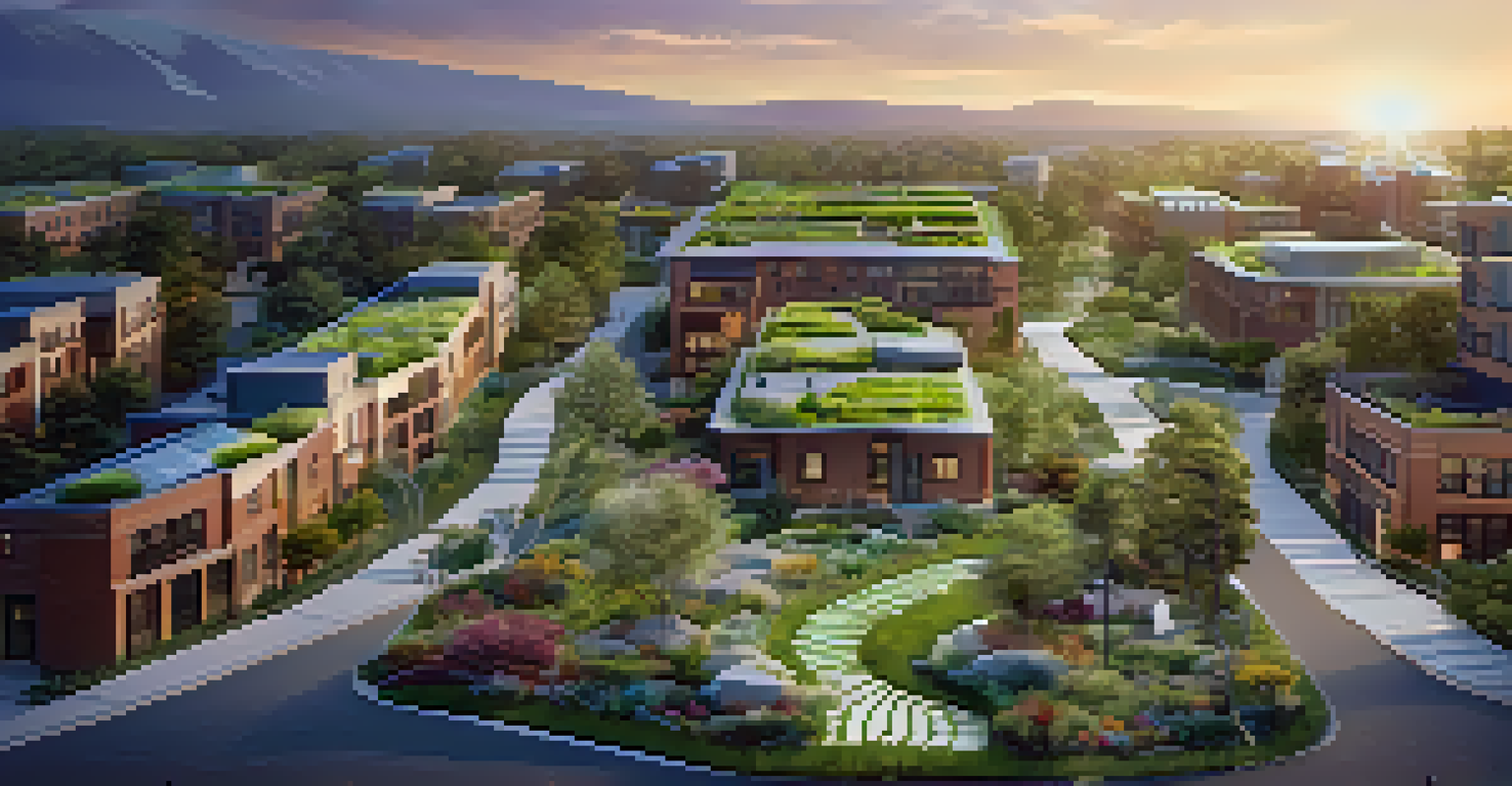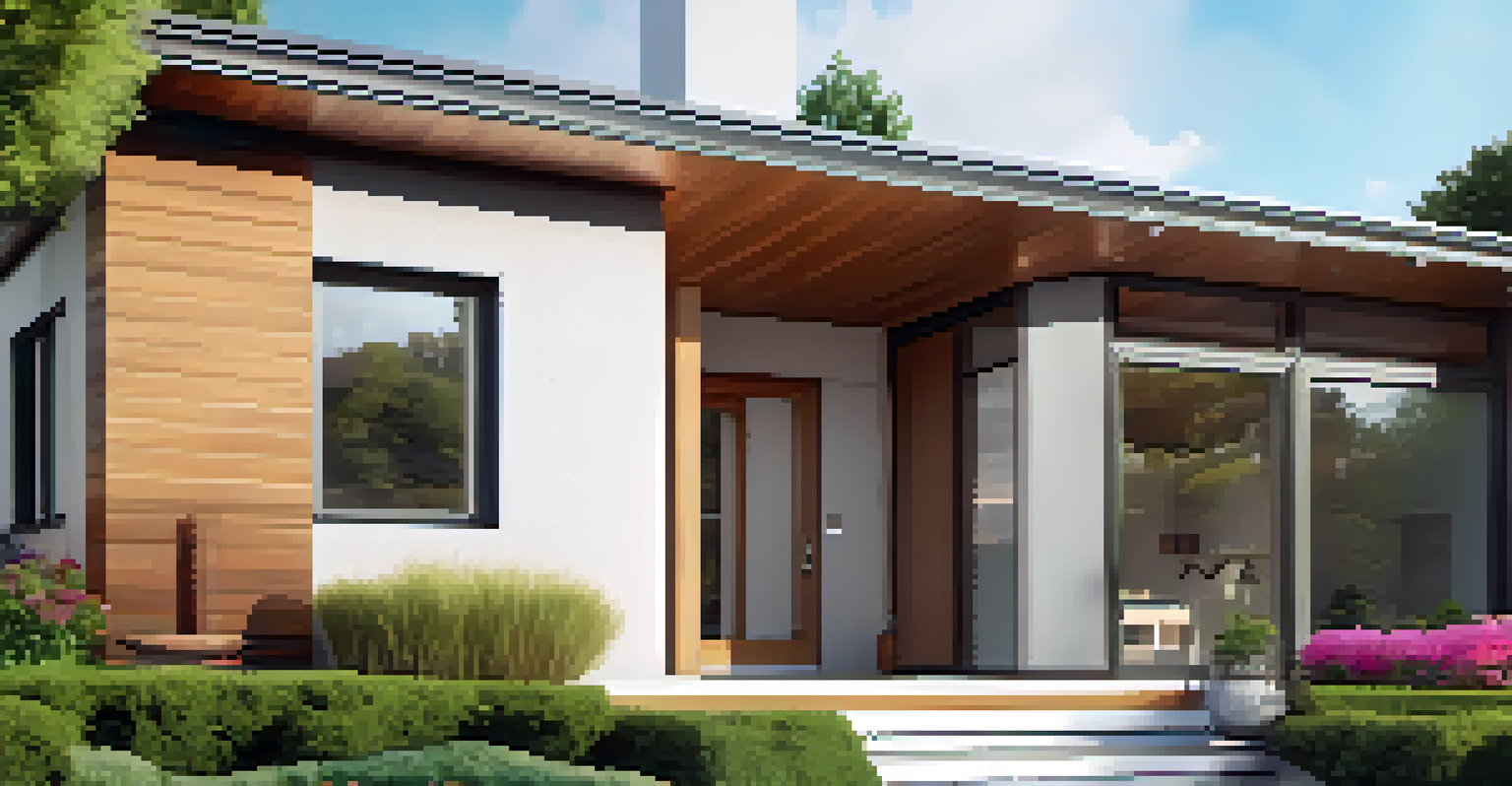How Urban Development Affects Housing Market Trends

Understanding Urban Development and Its Scope
Urban development refers to the process of improving and expanding city areas. This includes constructing new buildings, enhancing infrastructure, and creating public spaces. As cities grow, urban development becomes essential for accommodating increasing populations and economic activities.
Urban development is not just about buildings and infrastructure; it’s about the people who inhabit those spaces and the communities they create.
The scope of urban development is broad, involving residential, commercial, and industrial projects. Each type of development can influence the housing market in unique ways. For instance, a new shopping center can attract more residents, driving up demand for nearby housing.
Moreover, urban development often includes zoning changes, which can significantly impact where and how housing is built. Understanding this landscape is crucial for anyone interested in the housing market and its trends.
The Connection Between Infrastructure and Housing Prices
Infrastructure improvements, such as roads, public transportation, and utilities, play a significant role in shaping housing prices. When a neighborhood receives better access to these amenities, it becomes more attractive to potential buyers and renters. This increased desirability can lead to higher property values.

For example, the expansion of a subway line can make previously remote areas more accessible. Homebuyers often seek locations that offer convenience, so enhanced transportation options can lead to a spike in housing demand in those areas.
Ultimately, good infrastructure not only improves quality of life but also boosts the local economy, further driving up housing prices. This creates a cycle where development leads to increased demand and higher prices, impacting the overall housing market.
Gentrification: A Double-Edged Sword
Gentrification is a phenomenon often observed in urban development, where the influx of wealthier residents into a neighborhood leads to rising property values. While this can revitalize an area, it often comes at the cost of displacing long-time residents. Understanding this dynamic is crucial when discussing housing market trends.
Sustainability is about more than just the environment; it's about creating a better quality of life for all urban residents.
For instance, as new businesses and amenities appear, existing residents may find it increasingly difficult to afford their homes. This can create tension within communities, as long-time residents feel pushed out by newcomers. It's a delicate balance between development and preserving community identity.
Gentrification can also lead to a rise in housing prices, making homeownership less attainable for lower-income families. This shift can create market disparities and, consequently, a need for affordable housing initiatives to ensure everyone can benefit from urban development.
The Role of Housing Policies in Urban Development
Housing policies significantly influence how urban development affects housing market trends. These policies can dictate what types of housing can be built, who can afford it, and how neighborhoods evolve over time. Effective policies can foster growth while ensuring affordability.
For example, inclusionary zoning policies require developers to include a percentage of affordable units in new projects. This practice helps maintain diversity within neighborhoods and combats the negative effects of gentrification. Without such policies, urban development can lead to homogenized communities lacking affordable options.
Moreover, government incentives for developers to create affordable housing can lead to a more balanced housing market. Policymakers must stay attuned to market trends to create regulations that promote both development and accessibility.
The Impact of Economic Factors on Housing Trends
Economic factors such as job growth, interest rates, and overall economic health significantly impact the housing market. When the economy is booming, demand for housing often increases as more people seek homes. This can lead to a surge in housing prices, especially in urban areas where opportunities abound.
Conversely, during economic downturns, housing demand may plummet as people lose jobs or face uncertainty. This can lead to decreased property values, making it a buyer's market. Understanding these cycles is essential for anyone looking to navigate the housing market effectively.
Additionally, fluctuations in interest rates can affect buyers' purchasing power. Lower rates typically encourage more buyers to enter the market, while higher rates can slow it down. Thus, economic factors play a crucial role in shaping housing market trends.
How Sustainability Influences Urban Development
Sustainability is becoming a key consideration in urban development, influencing housing market trends in significant ways. Developers are increasingly focusing on eco-friendly practices, such as using sustainable materials and incorporating green spaces. This shift responds to consumer demand for environmentally responsible living options.
For instance, neighborhoods with green buildings and parks often attract buyers willing to pay a premium for sustainable features. This trend reflects a broader societal shift towards valuing sustainability, which is reshaping the housing market landscape.
Moreover, cities that prioritize sustainability often see long-term benefits, including enhanced quality of life and reduced environmental impact. As more communities embrace these principles, we can expect sustainability to continue shaping urban development and housing trends.
The Technology Factor in Urban Housing Development
Technology is rapidly changing the landscape of urban development and housing trends. Innovations such as smart home technology, online real estate platforms, and virtual tours are transforming how people buy and sell homes. These advancements make the housing market more accessible and efficient.
For example, prospective buyers can now explore homes through virtual reality without stepping foot inside. This convenience allows them to make informed decisions and increases competition in the market. As technology continues to evolve, it will undoubtedly further impact housing demand and prices.

Moreover, smart city initiatives that integrate technology into urban planning can enhance living conditions and attract new residents. As cities become more tech-savvy, the demand for housing in these areas is likely to rise, illustrating the profound influence of technology on the housing market.
Conclusion: The Future of Urban Development and Housing Trends
As urban development continues to evolve, its impact on housing market trends will remain a critical area of focus. Understanding the interconnectedness of infrastructure, policies, economics, sustainability, and technology is essential for navigating this landscape. Each element plays a role in shaping the future of housing.
Looking ahead, cities must balance growth with affordability to ensure that all residents can thrive. This may involve innovative housing solutions, community engagement, and thoughtful planning. The goal should be to create vibrant, diverse neighborhoods that accommodate all income levels.
In summary, the interplay between urban development and housing market trends will shape our cities for years to come. By staying informed and engaging in discussions about these issues, we can contribute to a more equitable and sustainable urban future.